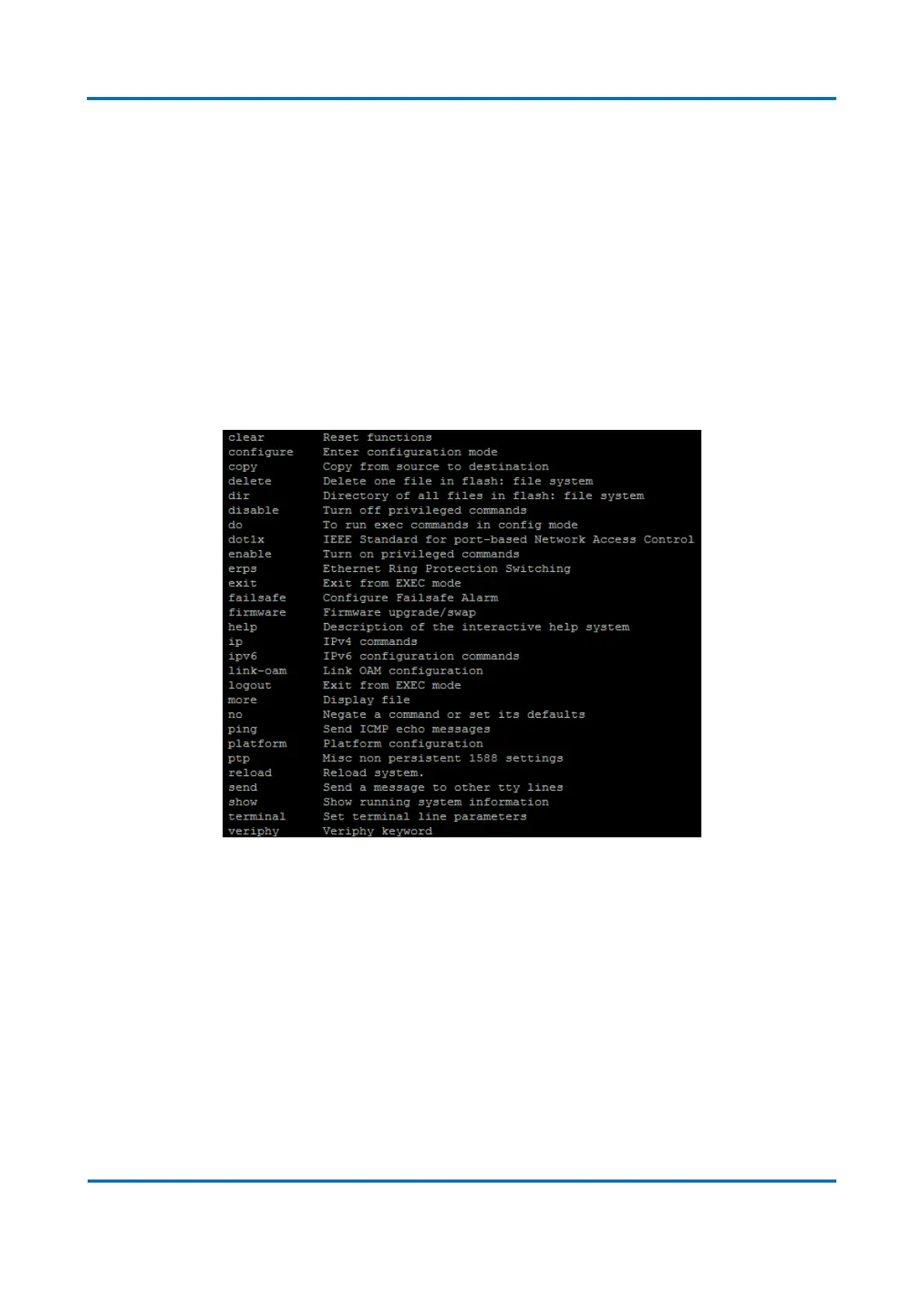reload reload system;
send send a message to other tty lines;
show show running system information;
terminal set terminal line parameters;
veriphy veriphy keyword.
Each command has a menu inside with its own subcommands. The main menu
displayed, after typing the “?” character, is shown below.
Figure 73: Main menu at the SSH interface
If necessary, Reason Switches have an online help at this interface. Thus, when
typing a command plus “?” it will be displayed all allowed subcommands of a given
menu. For example, if it is necessary to view all IP interfaces configured at the
equipment, type first:
show ?
It will be displayed all of the options allowed at the show menu. “IP” menu will be
there. Then, type:
show ip ?
It will be displayed all of the options allowed at the IP menu. “interface” will be there.
Then, type:

